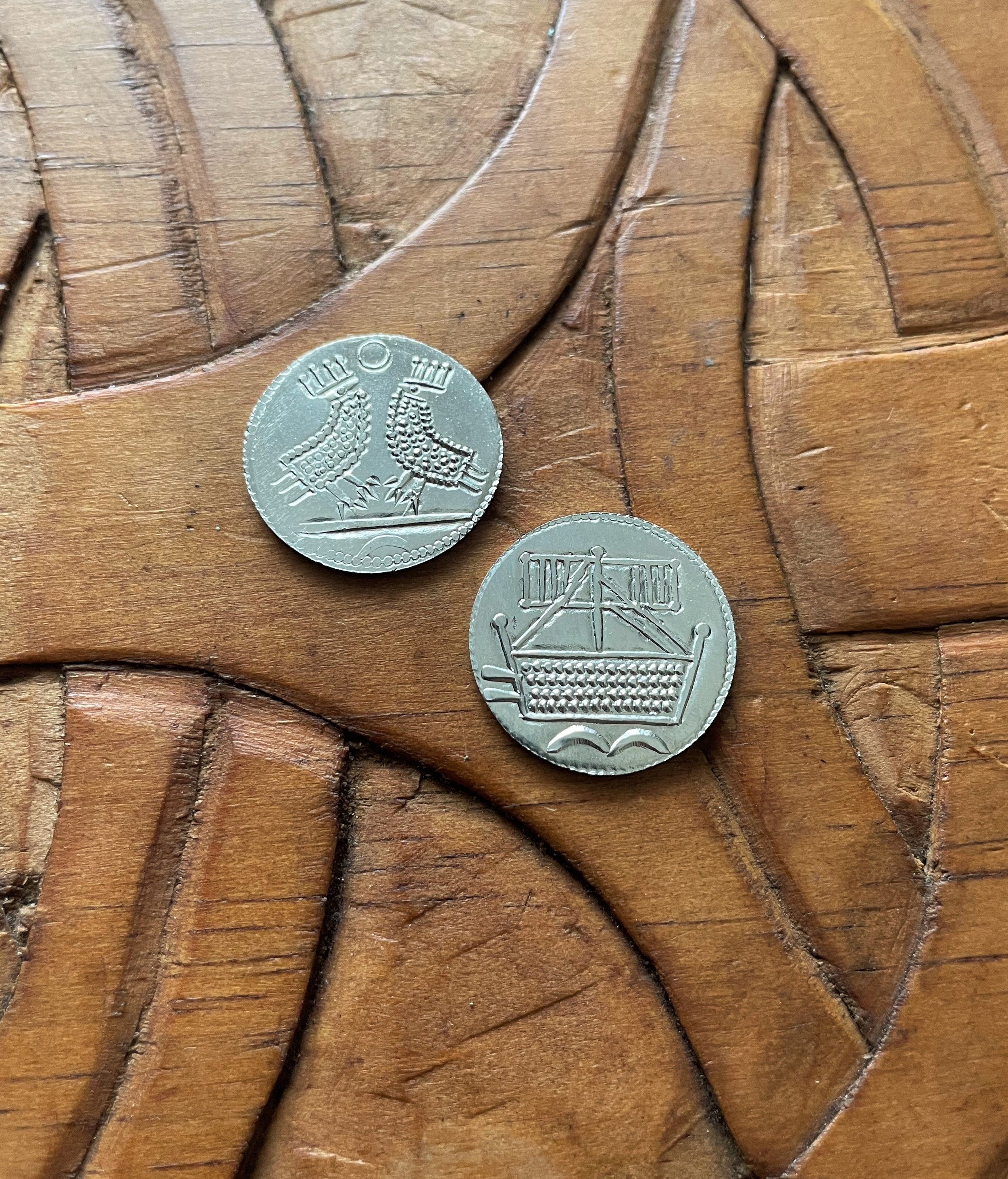Hedeby (Haithabu) Silver Ship Coin (Pair)
circa 800
Hedeby (Haithabu) was an important Danish Viking Age (8th to the 11th centuries) trading settlement near the southern end of the Jutland Peninsula, now in the Schleswig-Flensburg district of Schleswig-Holstein, Germany. Around 965, chronicler Abraham ben Jacob visited Hedeby and described it as, "a very large city at the very end of the world's ocean."
The settlement developed as a trading centre at the head of a narrow, navigable inlet known as the Schlei, which connects to the Baltic Sea. The location was favorable because there is a short portage of less than 15 km to the Treene River, which flows into the Eider with its North Sea estuary, making it a convenient place where goods and ships could be pulled on a corduroy road overland for an almost uninterrupted seaway between the Baltic and the North Sea and avoid a dangerous and time-consuming circumnavigation of Jutland, providing Hedeby with a role similar to later Lübeck. Hedeby was the second largest Nordic town during the Viking Age, after Uppåkra in present-day southern Sweden. Hedeby was abandoned after its destruction in 1066.
